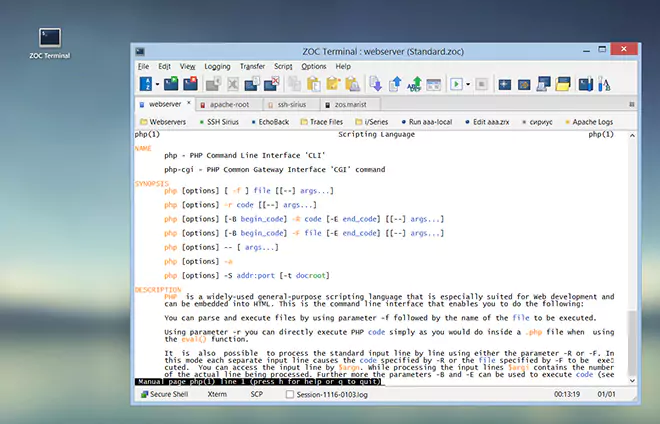Quick Start Guides → Direct Serial Connections Quick Start
| Using Quick Connect to Access Devices Attached to a Serial Port |
If you want to talk to devices which are directly connected to a serial port (e.g. cisco routers, microcontrollers, etc.), select File Menu→Quick Connection. In the quick connect dialog then select Serial/Direct as the connection type.
In the Connect to field enter the text localhost or the text serial. Then click the Configure button for Serial/Direct, check Override session profile and choose a com port via the Scan button and set the serial parameters.
Alternately you can type the actual name of a com port in the Connect to field. In this case, the value will override the port which is specified by the Configure button.
Important: Do not leave the Connect to field empty. You need to provide the text localhost or the text serial or the name of a serial port there.
| Connecting to Serial Devices via Host Directory |
You can also use the host directory for these type of connections. Go to File Menu→Host Directory, click New.
Enter a name for the entry and select Serial/Direct from the list of connection types. The Connect to field and Configure button are used in the same way as with the Quick Connect dialog (see above).
Important: Do not leave the Connect to field empty. You need to provide the text localhost or the text serial or the name of a serial port there.
To have ZOC learn and remember your login procedure for later automatic login (assuming the attached device requires a login), enable Record keystrokes on next login in the Login tab.
| Serial/Direct vs. Serial/Modem |
The Serial/Direct connection type is similar to Serial/Modem in many respects. However,
the main difference is that a 'connection' with Serial/Direct refers to the connection
between the computer and a local piece of equipment (e.g. a router), which is directly attached to
a local serial port or serial usb-port.
Serial/Modem however defines 'connection' as the connection between the
computer and a remote location, where the attached equipment (usually a modem)
is merely a way to establish the desired connection.
.
In other words, use Serial/Direct if you want to talk to the locally attached device (router, microcontroller, etc.) itself. Use Serial/Modem if the attached device is a modem which understands AT commands and which you want to use to connect to a remote computer.
More about the Serial/Direct and Serial/Modem connection types can be found in Serial/Direct
← Back to Quick Start Guides

